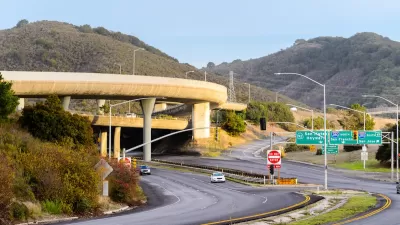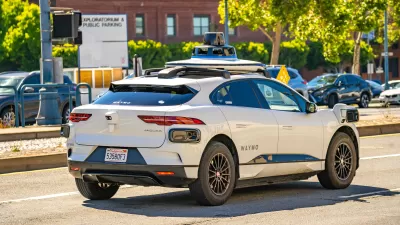As ‘robotaxis’ and other autonomous vehicles make their way onto American streets, cities can take proactive steps to mitigate risks and balance the benefits and challenges of new technology.

In an opinion piece in Governing, Hye Min Park and Fabian E. Villalobos describe a decision-making process utilized in industries such as water and energy that could simplify the complex process of regulating autonomous vehicles. “How can the sometimes-conflicting interests of all stakeholders be considered and balanced?”
The process, known as “decision-making under deep uncertainty” or DMDU, “focuses on actions that can be agreed upon, even if multiple stakeholders agree on little else. For instance, instead of speculating about what does or doesn’t make robotaxis unsafe, DMDU could help regulators and AV companies figure out which warning signs to monitor.” Other methods include measuring proxies for risk when better data is not available, such as “how rapidly the technology is adopted, whether an agency has the ability to manage the risk, or the size of the potentially affected population.”
According to the authors, “Cities and regulatory agencies can often feel that they’re left as bystanders when new technology is rolled out, yet they are responsible for the safety of whatever private entities develop and deploy.” This approach can help them proactively assess and mitigate risks as new technologies are introduced.
FULL STORY: Reining in the Risks of Robotaxis

Study: Maui’s Plan to Convert Vacation Rentals to Long-Term Housing Could Cause Nearly $1 Billion Economic Loss
The plan would reduce visitor accommodation by 25,% resulting in 1,900 jobs lost.

North Texas Transit Leaders Tout Benefits of TOD for Growing Region
At a summit focused on transit-oriented development, policymakers discussed how North Texas’ expanded light rail system can serve as a tool for economic growth.

Using Old Oil and Gas Wells for Green Energy Storage
Penn State researchers have found that repurposing abandoned oil and gas wells for geothermal-assisted compressed-air energy storage can boost efficiency, reduce environmental risks, and support clean energy and job transitions.

Private Donations Propel Early Restoration of Palisades Playground
Los Angeles has secured over $1.3 million in private funding to restore the Pacific Palisades playground months ahead of schedule, creating a modern, accessible space that supports community healing after recent wildfires.

From Blight to Benefit: Early Results From California’s Equitable Cleanup Program
The Equitable Community Revitalization Grant (ECRG) program is reshaping brownfield redevelopment by prioritizing projects in low-income and environmental justice communities, emphasizing equity, transparency, and community benefits.

Planting Relief: Tackling Las Vegas Heat One Tree at a Time
Nevada Plants, a Las Vegas-based nonprofit, is combating the city’s extreme urban heat by giving away trees to residents in underserved neighborhoods, promoting shade, sustainability, and community health.
Urban Design for Planners 1: Software Tools
This six-course series explores essential urban design concepts using open source software and equips planners with the tools they need to participate fully in the urban design process.
Planning for Universal Design
Learn the tools for implementing Universal Design in planning regulations.
Ascent Environmental
Borough of Carlisle
Institute for Housing and Urban Development Studies (IHS)
City of Grandview
Harvard GSD Executive Education
Toledo-Lucas County Plan Commissions
Salt Lake City
NYU Wagner Graduate School of Public Service





























